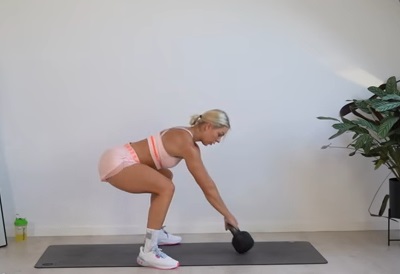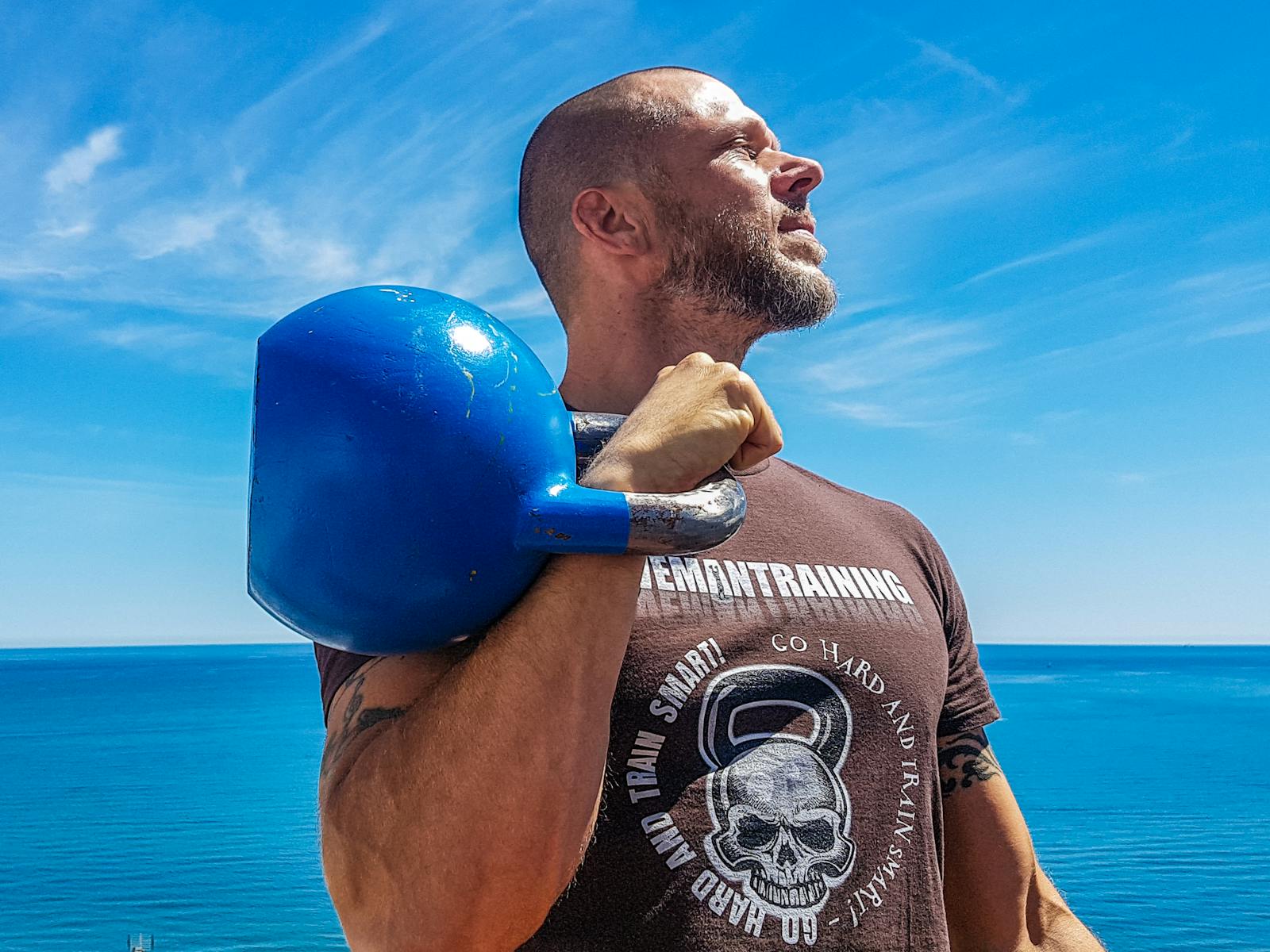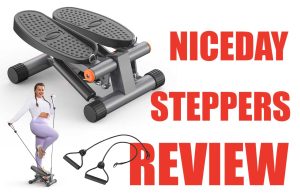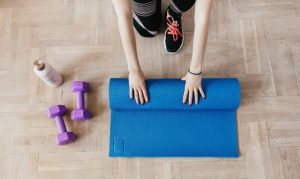
Kettlebell training has gained immense popularity in the fitness world due to its effectiveness in building strength, burning calories, and improving overall fitness. Whether you’re a beginner or an experienced fitness enthusiast, kettlebell training can be an excellent addition to your home workout routine. In this guide, we’ll walk you through the steps of starting kettlebell training at home, providing valuable insights and expert tips to help you get the most out of your workouts.
Choosing the Right Kettlebell:

Choosing the right kettlebell is a crucial decision that can significantly impact the effectiveness and safety of your kettlebell training journey. The selection process goes beyond just picking a weight; it involves considering factors such as your current fitness level, exercise experience, and long-term goals. Here’s a comprehensive guide to help you make an informed choice:
1. Assess Your Fitness Level: Understanding where you stand in terms of fitness is essential. Are you a complete beginner, moderately active, or an experienced athlete? This self-assessment will guide you toward the appropriate starting weight for your kettlebell.
2. Start Conservatively: Regardless of your fitness background, it’s advisable to start with a slightly lighter kettlebell than you think you can handle. This approach allows you to focus on learning proper technique without sacrificing form due to excessive weight. This is especially important in preventing injuries and building a solid foundation.
3. Choosing the Right Weight: For beginners, kettlebells in the range of 8 to 12 kilograms (18 to 26 pounds) are generally a good starting point. This weight range provides enough resistance to stimulate muscle engagement while allowing you to practice exercises with control and precision. As you become more comfortable with the movements and your strength improves, you can gradually move up in weight.
4. Consider Your Goals: Your fitness goals play a significant role in determining the appropriate kettlebell weight. If your primary aim is endurance and cardiovascular fitness, you might lean toward a lighter kettlebell for higher reps. On the other hand, if you’re focusing on strength and muscle building, you might opt for a heavier kettlebell for lower reps.
5. Avoid Overestimating: It’s common to overestimate your initial capabilities. A kettlebell that’s too heavy can lead to poor form, which not only diminishes the effectiveness of the exercises but also increases the risk of injury. Proper form should always take precedence over lifting heavier weights.
6. Progressive Overload: Keep in mind that the ideal kettlebell weight will change over time. The principle of progressive overload suggests that you should gradually increase the weight as your body adapts to the stress of training. This ongoing progression is key to continuous improvement.
7. Test Before Purchasing: If possible, visit a gym or fitness center that offers kettlebell training to try out different weights. This hands-on experience can give you a better sense of what weight feels comfortable and challenging for your current fitness level.
8. Invest in Quality: The quality of the kettlebell matters as well. Look for kettlebells with smooth handles that are comfortable to grip and are made of durable materials. A well-designed kettlebell can enhance your training experience and ensure safety.
9. Seek Professional Advice: If you’re unsure about the right kettlebell weight, consider consulting a fitness professional or personal trainer. They can assess your fitness level, goals, and technique to provide personalized recommendations.
10. Listen to Your Body: Ultimately, your body knows best. Pay attention to how your muscles and joints respond during your kettlebell workouts. If you’re experiencing discomfort or strain, it might be a sign that you need to adjust the weight.
Selecting the right kettlebell is a thoughtful process that sets the foundation for your kettlebell training journey. Remember that consistency and proper technique are far more important than lifting the heaviest weight right from the start. As you progress and your strength increases, you’ll naturally reach for heavier kettlebells, achieving your fitness goals safely and effectively.
Mastering Proper Form:

Mastering proper form in kettlebell exercises is a fundamental step that sets the stage for a successful and injury-free kettlebell training journey. Proper form not only maximizes the benefits of each exercise but also minimizes the risk of strain or injury. Here’s an in-depth exploration of the importance of proper form and how to achieve it:
1. Foundation of Safe and Effective Workouts: Think of the proper form as the foundation upon which your entire kettlebell training experience is built. Without a solid foundation, your progress could be hindered, and you might inadvertently subject your body to unnecessary stress.
2. Learn the Basics: Start with foundational kettlebell exercises like the kettlebell swing, goblet squat, and Turkish get-up. These exercises provide a well-rounded introduction to kettlebell movements and prepare you for more complex exercises.
3. Neutral Spine and Posture: Maintaining a neutral spine is paramount. Whether you’re swinging a kettlebell or performing a squat, ensure that your spine remains aligned from your head to your tailbone. This minimizes strain on your back and keeps your body in a strong, stable position.
4. Core Engagement: Engage your core muscles throughout the exercises. A strong core not only supports your spine but also helps stabilize your body as you move through various kettlebell movements. Imagine pulling your belly button toward your spine to activate your core.
5. Proper Breathing Technique: Breathing is often overlooked, but it’s integral to proper form. Inhale as you prepare for a movement, and exhale during the exertion phase. This controlled breathing pattern helps stabilize your core and provides the necessary oxygen to your muscles.
6. Start Light and Focus on Technique: When learning a new kettlebell exercise, start with a lighter weight than you might be capable of lifting. This allows you to focus on perfecting your technique without struggling to control the weight. As your form improves, gradually increase your weight.
7. Body Awareness: Pay attention to how your body moves and feels during each exercise. Understand which muscles are being engaged and which joints are involved. This awareness helps you make real-time adjustments to your form.
8. Video Analysis: Recording yourself while performing kettlebell exercises can provide valuable insights. Compare your movements to instructional videos or guides to identify any deviations from the proper form.
9. Seek Professional Guidance: If possible, work with a certified kettlebell instructor or personal trainer. They can offer personalized guidance, correct your form in real-time, and provide tailored exercises based on your fitness level and goals.
10. Gradual Progression: Don’t rush the process of mastering proper form. Progress at your own pace. As you become more comfortable with basic exercises, you can gradually incorporate more complex movements and advanced kettlebell techniques.
11. Flexibility and Mobility: Achieving proper form also involves addressing flexibility and mobility. Adequate mobility in your hips, shoulders, and other key joints ensures that you can perform movements with the necessary range of motion without compromising form.
12. Regular Form Checks: Even as you become more experienced, periodically review your form. Over time, bad habits can creep in, so regular form checks are a proactive way to ensure you’re maintaining proper technique.
Mastering proper form in kettlebell exercises is a continuous journey. Strive for consistency, patience, and a commitment to excellence in each movement. The time invested in perfecting your form will pay off in the form of enhanced performance, reduced risk of injury, and steady progress toward your fitness goals.
Designing a Workout Routine For Kettlebell Training:

Designing an effective and comprehensive workout routine for kettlebell training involves more than just randomly selecting exercises. It requires a strategic approach that takes into consideration various factors such as your fitness goals, current fitness level, and the principles of progressive overload. Let’s delve deeper into the process of creating a well-rounded kettlebell workout routine.
1. Set Clear Goals: Begin by defining your fitness objectives. Do you aim to build strength, increase muscle mass, improve cardiovascular fitness, or enhance overall functional fitness? Your goals will influence the structure of your routine.
2. Warm-Up: Never underestimate the importance of a proper warm-up. Engage in dynamic stretches, light cardio, and mobility exercises to prepare your muscles and joints for the upcoming workout. This reduces the risk of injury and enhances performance.
3. Exercise Selection: Choose a variety of kettlebell exercises that engage different muscle groups. Include both compound movements (exercises that work multiple muscle groups) and isolation exercises (targeting specific muscles). Examples of compound exercises include kettlebell swings, goblet squats, and Turkish get-ups, while isolation exercises can involve bicep curls or tricep extensions.
4. Structuring the Routine: Organize your routine into segments, such as upper body, lower body, core, and cardiovascular exercises. This ensures that you’re addressing all major muscle groups and aspects of fitness. For instance, a sample routine might consist of kettlebell deadlifts and rows for the back, kettlebell lunges for the legs, kettlebell windmills for the core, and kettlebell snatches for cardiovascular conditioning.
5. Reps and Sets: Determine the number of repetitions and sets based on your goals. For strength building, opt for lower reps (4-6) with heavier kettlebells, while for muscular endurance, go for higher reps (10-15) with moderate weights. Adjust the number of sets accordingly.
6. Rest Intervals: Rest intervals impact the intensity of your workout. Shorter rests increase the challenge and cardiovascular demand, while longer rests allow for recovery between sets. For strength-focused exercises, rest 2-3 minutes between sets, and for cardiovascular exercises, aim for 30-60 seconds of rest.
7. Progressive Overload: To continuously make gains, incorporate the principle of progressive overload. Gradually increase the weight, reps, or sets over time to challenge your muscles and encourage growth.
8. Cooling Down: After completing the main workout, cool down with static stretches that target the muscles you’ve worked. This promotes flexibility and aids in recovery.
9. Frequency: Determine how often you’ll perform your kettlebell routine. Beginners might start with 2-3 sessions per week, allowing for recovery days in between. As your fitness level improves, you can increase the frequency.
10. Listen to Your Body: Pay attention to your body’s signals. If you’re fatigued, consider taking an extra rest day. Pushing through extreme fatigue could lead to overtraining and potential injuries.
Remember, consistency is key. Stick to your routine and track your progress over time. Consider consulting with a fitness professional to tailor the routine to your specific needs and to ensure you’re performing the exercises with the proper form to avoid injury. And as you progress, don’t hesitate to tweak and modify the routine to keep challenging your body and avoiding plateaus.
Incorporating Progression Techniques:
To continue challenging your body and making progress, it’s important to incorporate progression techniques into your kettlebell training. These techniques can include increasing the weight of your kettlebell, adding more repetitions, or reducing rest time between sets. Progression ensures that your body doesn’t plateau and keeps adapting to the demands of the workouts.
30 Minute Beginner Kettlebell Workout For Beginners
Ensuring Safety and Injury Prevention:
Safety should always be a top priority when training with kettlebells. Ensure you have enough space to perform exercises without any obstacles. Always warm up before starting your workouts to prepare your muscles and joints for the movements. Listen to your body and avoid pushing yourself beyond your limits, especially when starting out. If you have any pre-existing medical conditions or concerns, consult with a healthcare professional before beginning kettlebell training.
Tracking Your Progress:
Tracking your progress is a great way to stay motivated and monitor your improvement over time. Keep a workout journal or use a fitness tracking app to record the exercises, sets, reps, and weights used during each session. This will allow you to identify areas of improvement and adjust your training accordingly. Celebrate milestones and set new goals to keep your kettlebell training exciting and challenging.
Seeking Professional Guidance:
If you’re new to kettlebell training or feel unsure about proper form and technique, consider seeking guidance from a certified kettlebell instructor or personal trainer. They can provide personalized guidance, correct your form, and help you design an effective training plan based on your fitness goals and abilities.
Conclusion:
Starting kettlebell training at home can be a game-changer for fitness enthusiasts. By following these steps and incorporating the provided tips, you’ll be well on your way to reaping the numerous benefits of kettlebell workouts. Remember to start with an appropriate kettlebell weight, focus on proper form, create a structured routine, incorporate progression techniques, prioritize safety, track your progress, and seek professional guidance when needed. Embrace the versatility of kettlebell training and enjoy the results as you sculpt your body and enhance your overall fitness level.
Related posts:



